Initial Impressions: Gyeon CanCoat
by Zach McGovernWaxes, sealants, coatings… oh my! The paint protection industry is evolving every single day. New technology is pushing out new products faster and faster, and consumers now have so many options it can be a bit overwhelming. Today we are going to talk about one of those options, Gyeon CanCoat.
Gyeon CanCoat is essentially a coating in a can, designed to help you save time when protecting your paint! We all love coatings, the glossy look and durable protection they provide, but they can be time-consuming to apply. Gyeon set out to develop a product that will help you achieve the look you receive from a coating, all while saving you time during the application process. The protective layer left behind helps protect the paint from UV rays, strong chemicals, bird droppings, road salt and other road grime for up to 6 months. CanCoat will also provide extra depth to dark-colored paint, extra reflectivity to metallic paints and a super slick finish. Add on the amazing water beading and hydrophobic properties and you have yourself another winner in the Gyeon line of products.
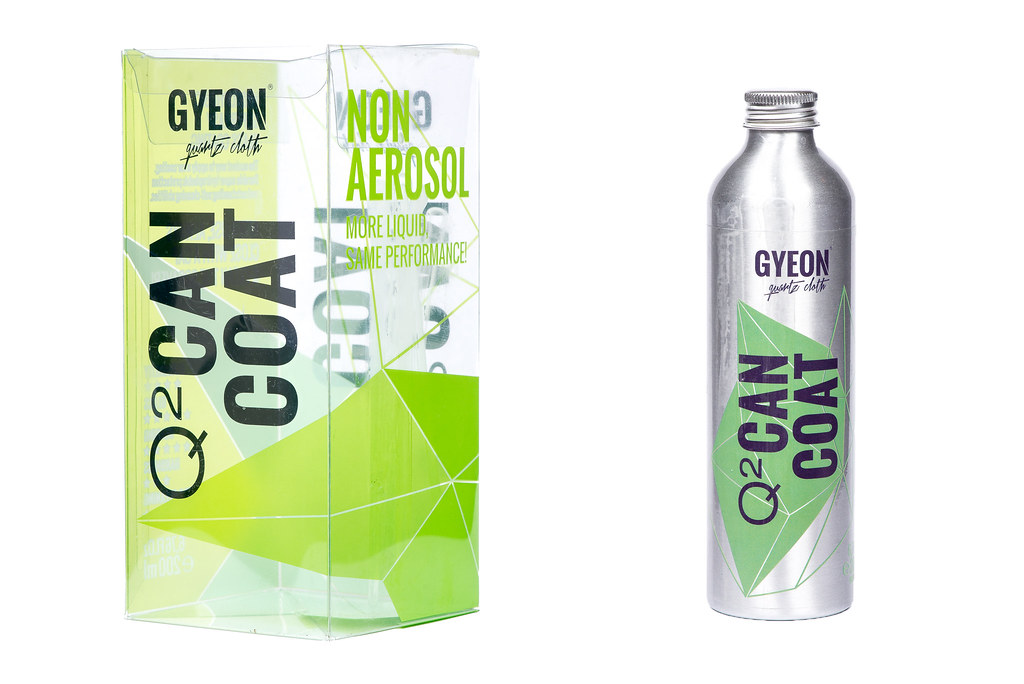
Is it a Coating or a Sealant?
I’ve discovered that Can Coat is a bit of a unique product. In my opinion, it falls somewhere between the two categories. Can coat claims to provide many of the benefits of a true coating such as strong protection against chemicals, environmental contaminants, and UV rays, however it does not offer the same durability that most coatings can provide. Can Coat is like a more potent version of a spray sealant such as Gyeon Cure, but a less potent version of a coating like Gyeon Mohs. Can Coat may be applied on top of an existing coating or as a stand alone layer of protection.
A few characteristics of the product have caught me off guard throughout my testing. First, Can Coat will harden inside of the sprayer after use, ruining the sprayer. Second, if you are spraying the product onto an applicator or towel above or up wind of a panel and overspray lands on the car, wipe it off quickly! I realized far too late that some overspray had landed on my windshield, which was not an area that I was inspecting/wiping as I worked, and let me tell you, it took some effort to remove. With these two observations, I can say that this spray protection is certainly in a different league than your typical spray sealant, and is more along the lines of what you would expect from a proper coating.
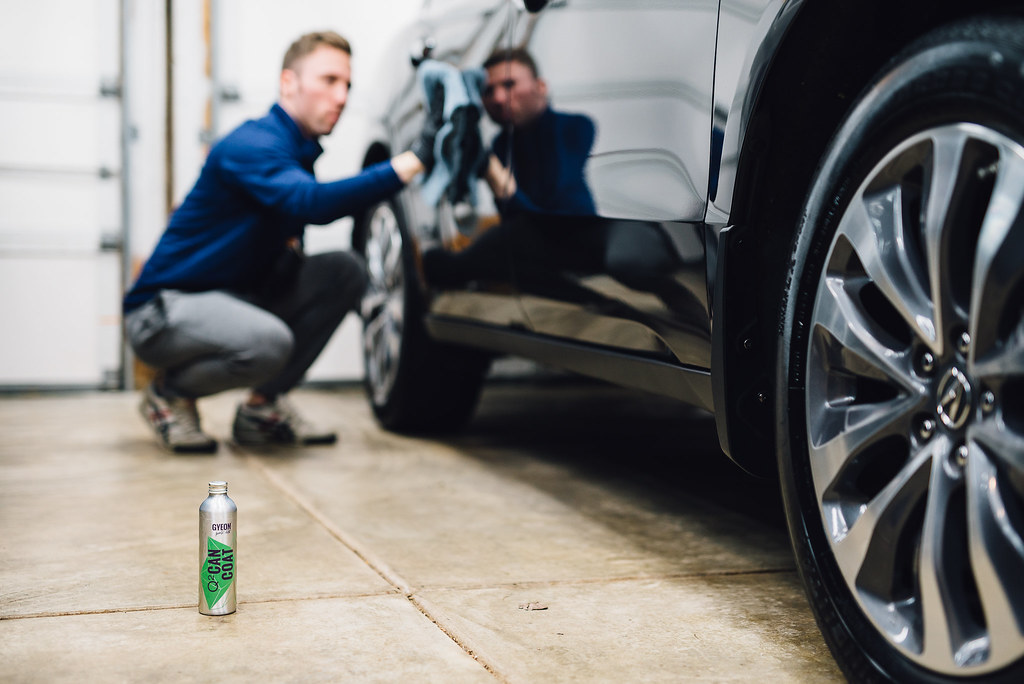
Application
It is extremely important to ensure the vehicle is thoroughly cleaned. A proper car wash should be done at the very least. Use Gyeon Prep to ensure the surface is free of any oils and be certain that everything is completely dry before applying Can Coat. The paint should be cool to the touch prior to application. Do not work in direct sunlight.
I made some fundamental errors during my first attempt at using Can Coat. Since I had associated the product with other coatings, I treated it like a normal coating application. I sprayed the product onto a microfiber applicator and then spread the coating onto a section of the paint using overlapping, cross-hatch motions. I then wiped the residue away and moved on to the next section. This was easy enough, though I did notice some residual product or light streaking from time to time that required additional attention to completely remove. As I continued to work I began to understand that with this product, less is more. Over application provided no benefit. It just took more time, created more work, and made for a more stressful process.
Upon further review of the directions (yes, sometimes I fail to fully read the directions) I noticed that it is recommended to simply spray the coating onto a microfiber towel, wipe onto the paint, then immediately wipe away with a second towel. This proved to be the key to success. I was able to spread the product onto an entire panel with just one or two sprays onto a plush towel. The entire vehicle was coated in just 20 minutes. It was quick and painless. I had no issues with streaking and no smeary residue to battle. This application was as easy as using Gyeon Cure.
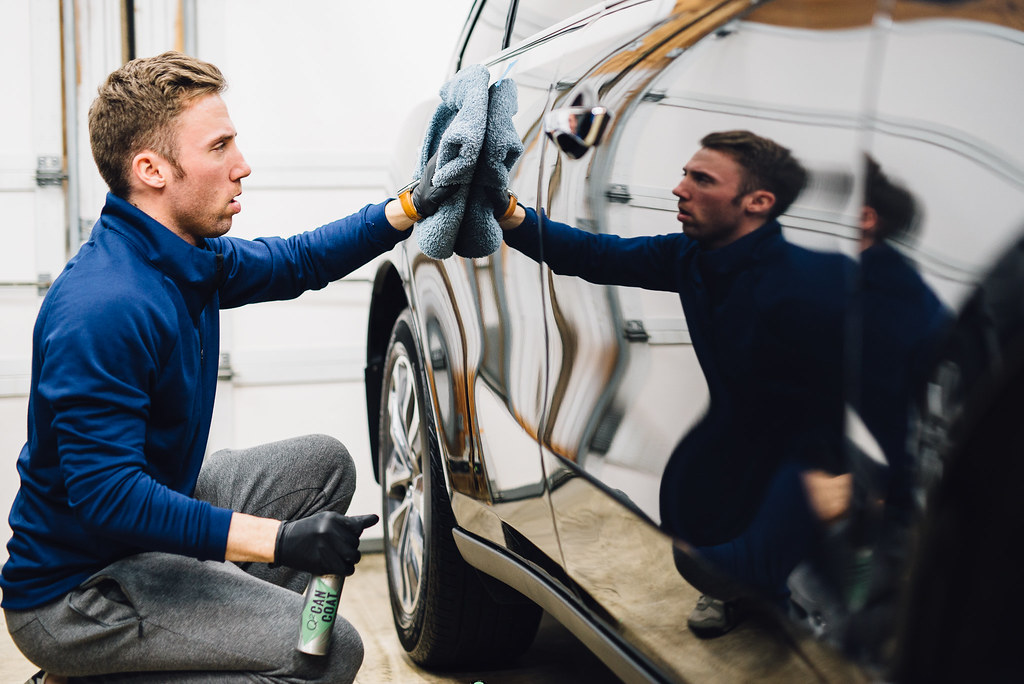
The results were gorgeous…
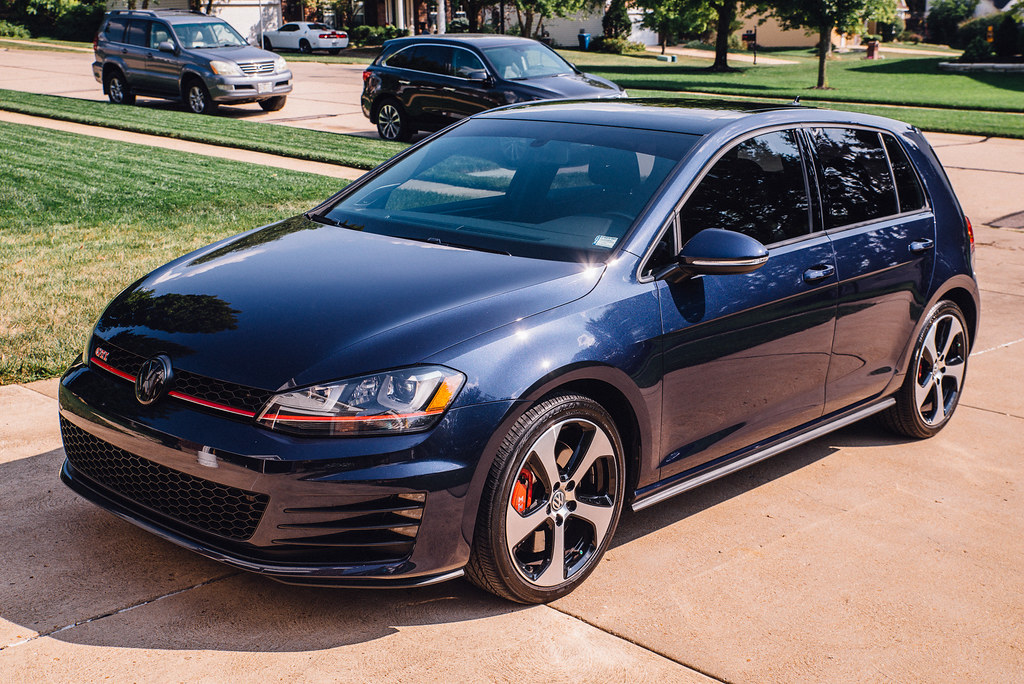

… and let’s not forget about my favorite part. Without further delay, I present to you, the beads!
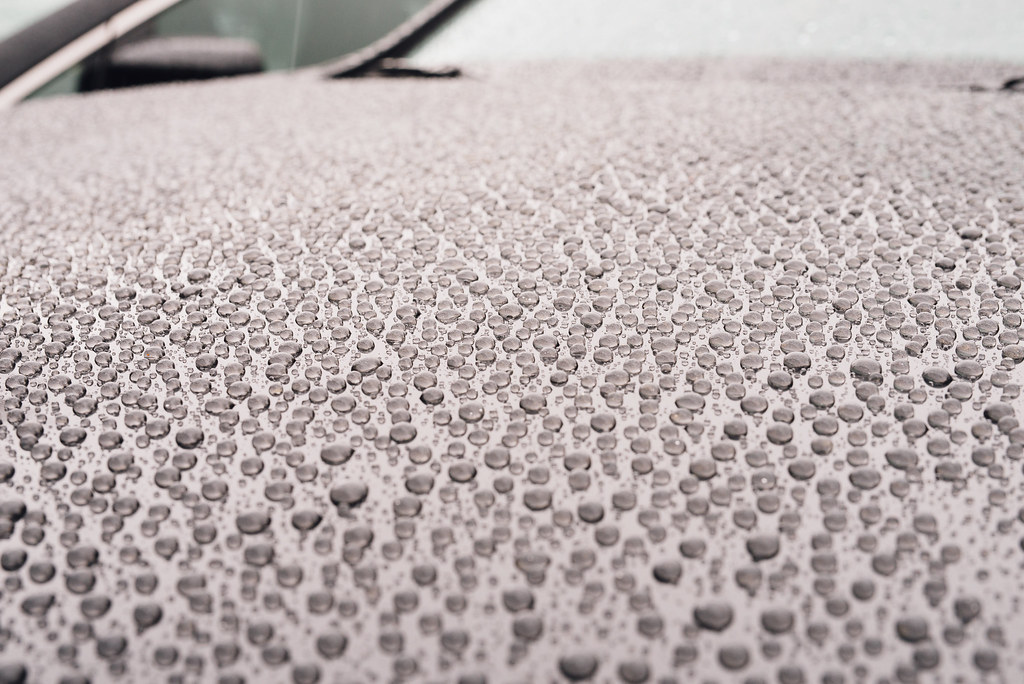
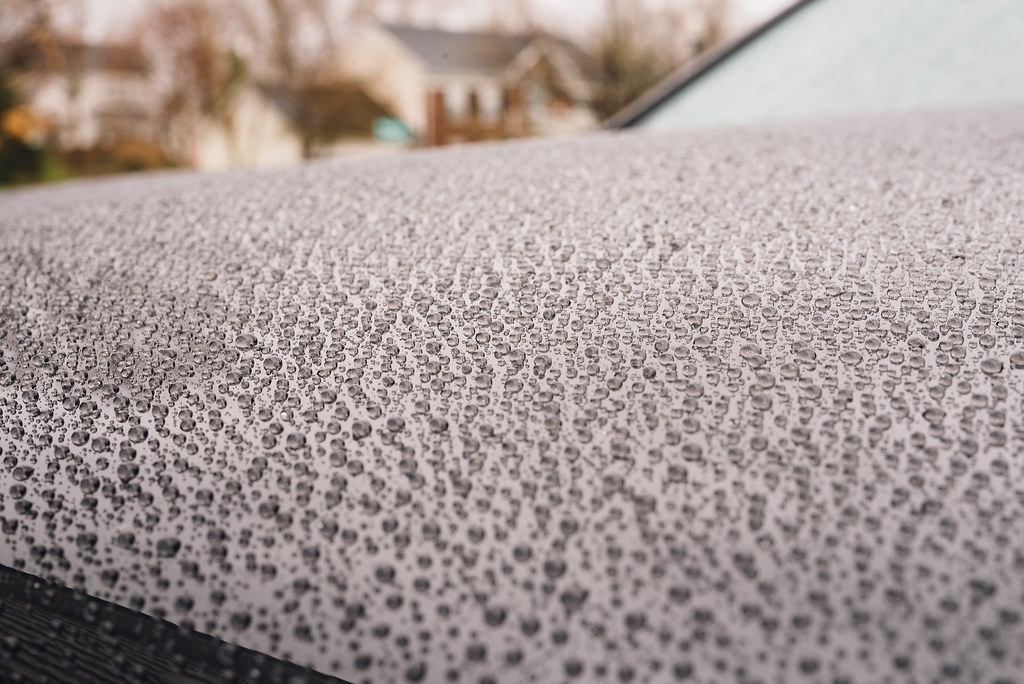

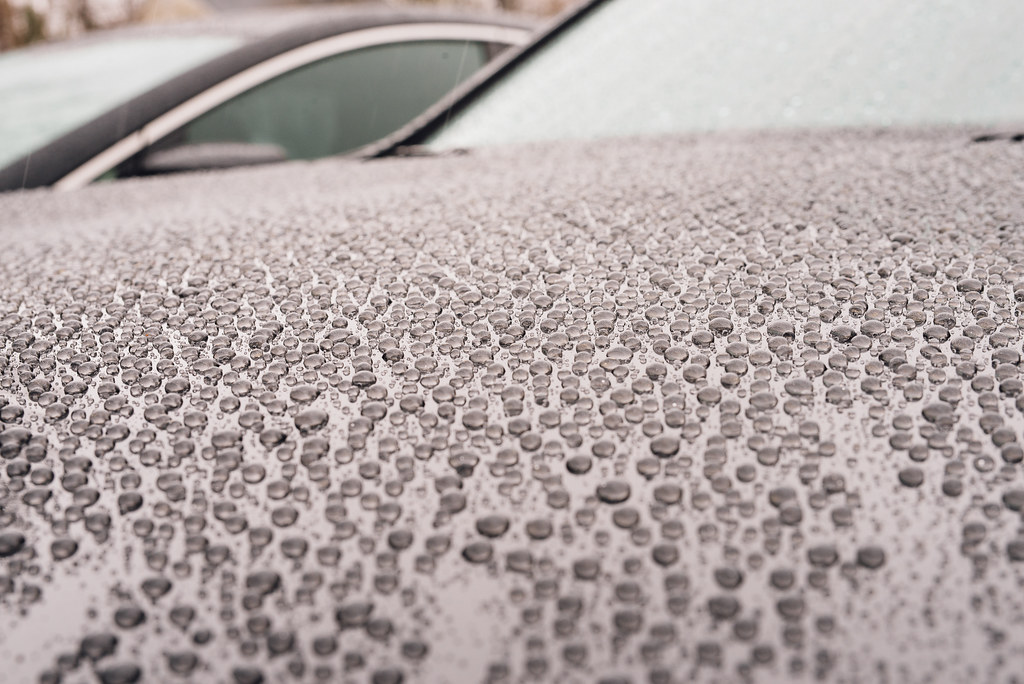
Gyeon claims that Can Coat should be fully cured within 24 hours and it is best to avoid strong chemicals during the first week after application. Can Coat may be topped with Gyeon Cure if you wish. I recommend removing the sprayer from the bottle and cleaning it out with water after each use so you can re-use it. Store the bottle in a cool area with the cap secured in between uses.
I’ve been impressed with what I have seen from Can Coat. I have not been testing it long enough to comment on the extent of its durability claims, however Gyeon states it can last up to 6 months. With as easy as it is to apply, and as little product as I feel I have used, it seems like a great product to have around for boosting the protection and gloss on top of our coated vehicles from time to time.










Nice write up Zach. CanCoat is a great product. Probably my favorite protection from the current Gyeon line. That includes Gyeon Syncro which has been underwhelming for me. But that is another story for another time. CanCoat is quite versatile and for me it exceeded the longevity and durability claims which Gyeon claims to be roughly 6-9 months.
I had CanCoat last 15 months on a vehicle that was polished with Gyeon Primer Polished and maintained every now and then with Cure. I consider this a triple threat that just performs well.
Unlike yourself and applying with the towel which is easy enough, I just get better coverage with a microfiber applicator. It does not take any longer than using it with a towel. I also get less streaking with the microfiber applicator than I do with the towel.
One thing that is interesting is that CanCoat does indeed harden but it hardens into a white powdered silica which is cool. It can be seen in the sprayer as well. I know many have had issues with the sprayers fail even after rinsing but for me I am still on the original sprayer. I rinse it with hot water and pump hot water through it.
Overall CanCoat is a great product and I would definitely recommend this to others who are looking to get into a coating. At the same time I would recommend going with the combination of Primer Polish + CanCoat + Cure for a simple and long lasting performer.
Hi Mike – thanks for all of your feedback! I do really like the product, however, I had been hoping for better performance with regards to the durability of the hydrophobic properties. I drive my vehicle a LOT, and unfortunately only experienced a month or two of beading before it had diminished entirely on the sides of the car. I do understand that my car takes a beating due to the amount of mileage I put on it, but I still had high hopes. In any case, the gloss was outstanding and given the simplicity of the product it would take no time for me to reapply it should I wish to do so Perhaps I will give a microfiber applicator a shot next time.
Perhaps I will give a microfiber applicator a shot next time.
It’s product of the decade for detailors I use it from everything as a stand alone 1 year coating to topping a prosumer coating at the 1 year mark to bring the coating back to day 1. You can make a lot of money off. I also use it as a 3 moth wheel coating and tuff shine tire coating on the rubber. In colder weather it very easy to apply as well. Thanks gyeon
Thanks for the feedback, Matt!
Quick question: I used Gyeon trim back in sept. My Tacoma trim is already looking dull especially over the wheel wells. Have you seen this before? I’m looking into other products if this is normal for the product to fade that fast.
Products: carpro trim sealant: gtechinq sealant: have you used and of them? What do you think about gliss over can coat?
Thanks
Nathan
What about using Iron for a through decontamination after the hydrophobic properties seem to be diminishing? See like a good idea.
Can this be taken off the paint in any other way besides machine polishing? Looking at this as a possibility for brand new Astons and Bentleys but whomever buys them may want them clear bra’d and that should be on bare paint, hence the removal of the CanCoat. Zack or anyone if you can advise the removal process that would be helpful
It will require polishing to remove it.
I would recommend polishing to ensure it has been removed.
I’m sorry but at $55 for CanCoat that lasts months make no sense when at $70 you can purchase GTechniqs Crystal Serum Light and get years of protection. It doesn’t take any more effort to do either correctly. That stuff is overpriced IMO.
Somewhat of an ‘Apples to Oranges’ comparison. The $55 CanCoat will get you enough to apply to 4 or 5 vehicles, while the CSL is a 1-car deal. *IF* you’re terribly OCD-ish about a black car that sees regular, daily use (and thus requires more frequent polishing/defect removal to meet your aesthetic standards) CanCoat is likely the better option. And while CSL claims years of protection and may well still exist on the surface after 2 or 3 years, the harsh world is likely gonna instill enough defects in the paint (CSL can’t protect against everything that hits it, nor can any coating) that you’re gonna need to repolish and reapply CSL before it’s claimed lifespan expires, valid or not.
I used CSL topped w/ C2V3 on a vehicle, applied January 2017 and it was among the poorest at self cleaning among the many coatings I have tried; it rained, it needed washing. The base CSL significantly improved in this area after a month or two, likely when the C2V3 application wore off. After 8 months and 20k+ miles, the CSL was doing alright but CSL alone is not really noted for its extensively entertaining water behavior so I was looking for something to maintain the richness of the base CSL look (which I liked) but wanted something a bit more long lasting than a standard topper/booster to improve the self cleaning/hydrophobic behavior….so I topped it with a layer of CanCoat, which totally transformed the performance of the CSL in a definitely positive manner. The CanCoat added a bit of pleasing to me candy-gloss pop to the CSL and CanCoat has great hydrophobic/self-cleaning characteristics which it lent to the overall performance of the vehicle.
Also, I can CanCoat a vehicle in about 10-15 minutes; it’s much like using a quick detailer or booster for me.
So there are certainly valid options for a variety of circumstances, just gotta find out which works best for you but really, CanCoat is not in the same product class as a ‘full-on’ coating like CSL. However, it certainly has its place in the right situations, either as a stand-alone or a booster for an existing coating.
It’s $55 but will do 5-7 vehicles. I sell it as a season-long + coating that has a super hydrophobic self cleaning property. For me it’s positioned to customers as an upgrade to a standard sealant. So the customer looking for a basic clean or a mild correction/polish that I might just tackle with HDSpeed I sell them CanCoat. Then instead of using Speed, I’ll use their Primer Product or any standard polish. Key with CanCoat is the time savings.
I’ve done 7 vehicles over the past 21/2 years using CSL. One 30ml bottle did 2 Lincoln MKC’s as an example. I maintain my vehicles using a 50% mixture of water and C2V3 as a drying agent and occasionally full strength with the product. Both vehicles are on their 3rd Ohio winter. I find the self-cleaning and hydrophobic properties to be pretty darn good. So all you convinced me of is CanCoat is a more expensive version of C2V3 which makes it more expensive as a maintenance product and less versatile because it can’t be diluted to use as a drying agent.
I’m a big user of CanCoat for a ceramic sealant. I pair it with single step corrections for a high level of gloss and easy application. Beyond that, I’ve been getting easily seven or eight sedans out of a bottle.
Nice write up. I had it on my car for the summer and loved it. Super hydrophobic and great self cleaning property.
Doesn’t seem very different from other coatings other than being removed immediately vs. after a few seconds. Am I missing something? I can get close to 6 months from Sonax PNS, Duragloss 111, and other sealants. Those can be easily reapplied as needed and don’t have to be polished off. Not sure I’m getting the point of this stuff.
There is no need to polish CanCoat away before reapplying. Just like a PNS (and others) you can simply clean, decontaminate, and reapply. The theoretical benefit is that CanCoat creates a stronger, more durable protective layer due to the fact that it physically cures to a hardened state, unlike a polymer sealant. However, PNS is a bit less finicky to apply, and I do agree that it produces outstanding results and is very easy to use. It is really just about preference.
Going to buy some!
Do you have to discard the microfiber towels after installing gyeon cancoat? Or soak them in apc and water? Can I reuse towels? Thanks
Soak them right away in a microfiber laundry solution and then dump into washing machine. If left out in the open it will cure a bit and the portion of towel twel will be very hydrophobic.
Love this product
I just tried Gyeon Can Coat EVO for the first time. I used it as a topper for an existing coating I installed on a client’s vehicle, which was in for a maintenance detail. Color me impressed!
Can Coat is an easy to apply ceramic coating for the DIY detailer. The hydrophobicity of this product is amazing with tight uniform water beading. This smooth ceramic coating repels dirt and bird droppings easily wipe off.
After using Can Coat, I’ve become a fan of other GYEON products to support the coating including Gyeon Ceramic Detailer, Gyeon Cure, Gyeon Bath+ and others.